Bulk-generate & schedule posts in seconds with Smart Scheduling. Try now!
15 hacks to improve cross-team collaboration in 2025
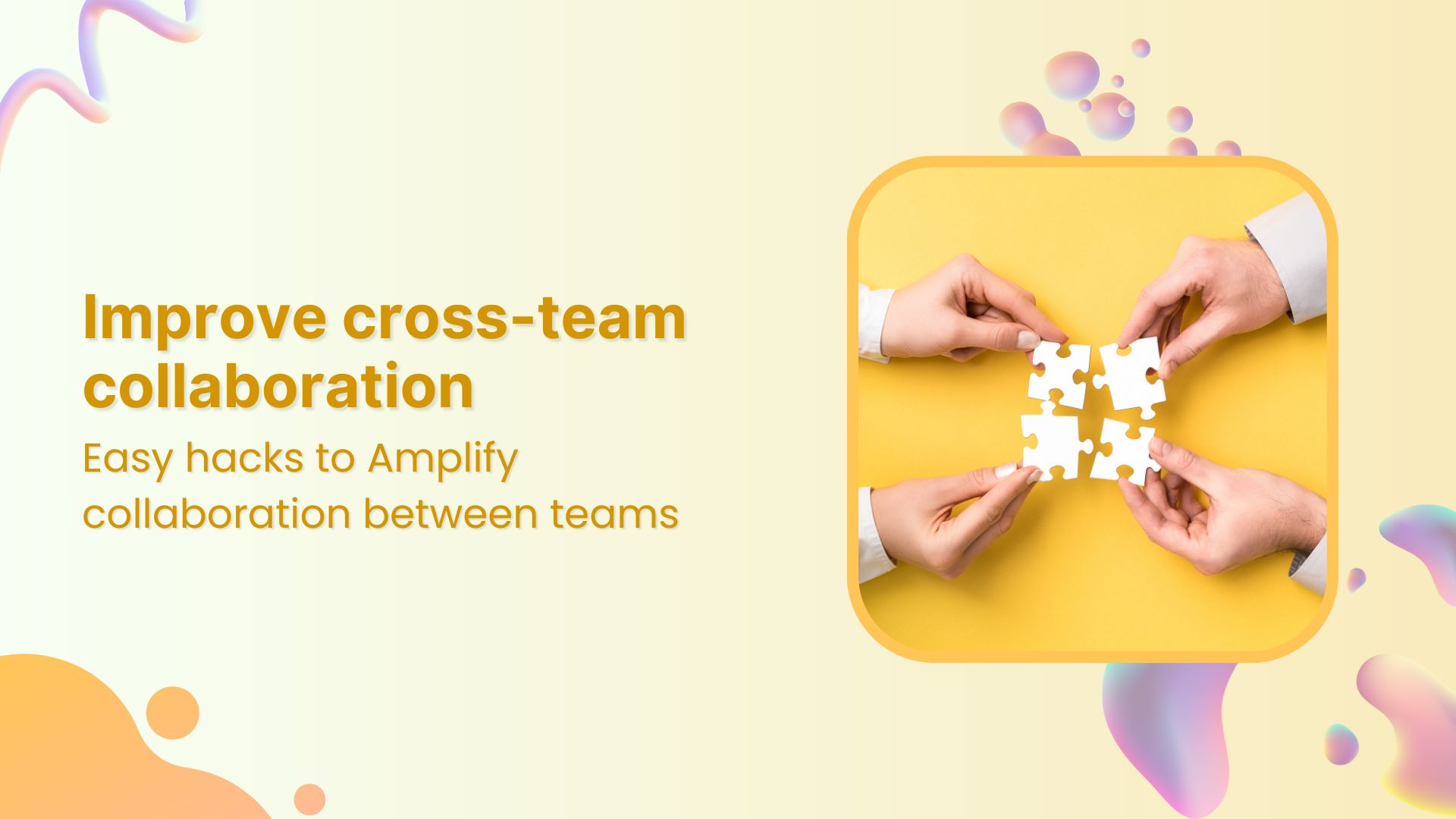
Is your team struggling to bridge communication gaps across departments? With digital transformation on the rise, cross-team collaboration is more vital than ever.
In fact, 57% of organizations believe that digital elements will drive workplace transformation more than physical (38%) or cultural (15%) factors.
This shift means teams must adapt to work together more seamlessly, regardless of their locations or roles.
Studies show that teams using collaborative software are 30% more productive than those that don’t. With the global Collaboration Software market set to reach $16.62 billion by 2029, investing in the right tools is crucial.
To help your teams work smarter, here are 15 hacks to improve cross-team collaboration in 2025.
Related read: Top 14 collaboration tools every team needs
What is cross-team collaboration?
Cross-team collaboration, also known as cross-functional collaboration, is when individuals from different departments come together to work toward a common goal. This approach combines the skills, perspectives, and knowledge from various teams like marketing, sales, product development, and customer service to achieve shared objectives.
For example, consider a product launch. The marketing team develops a promotion strategy, the product team provides technical details, the sales team offers customer insights, and the customer service team shares common user feedback. This collaboration creates a comprehensive approach that addresses all aspects of the launch.
Cross-team collaboration offers several key benefits that can significantly impact your organization’s success.
Let’s explore these advantages in detail:
- Faster problem-solving
When teams collaborate, they bring different ideas and expertise, leading to more creative and holistic solutions to challenges.
- Boosted efficiency
Working across teams helps streamline processes, reduce individual workloads, and use resources more effectively, resulting in higher productivity.
- Increased innovation
Combining ideas from diverse teams sparks creativity, leading to innovative concepts, products, or services that might not emerge in isolation.
- Higher job satisfaction
Cross-team collaboration fosters a supportive work environment, reduces conflicts, and creates a shared sense of purpose, making work more enjoyable for everyone involved.
The easiest way to manage and grow your social channels.
Try ContentStudio for FREE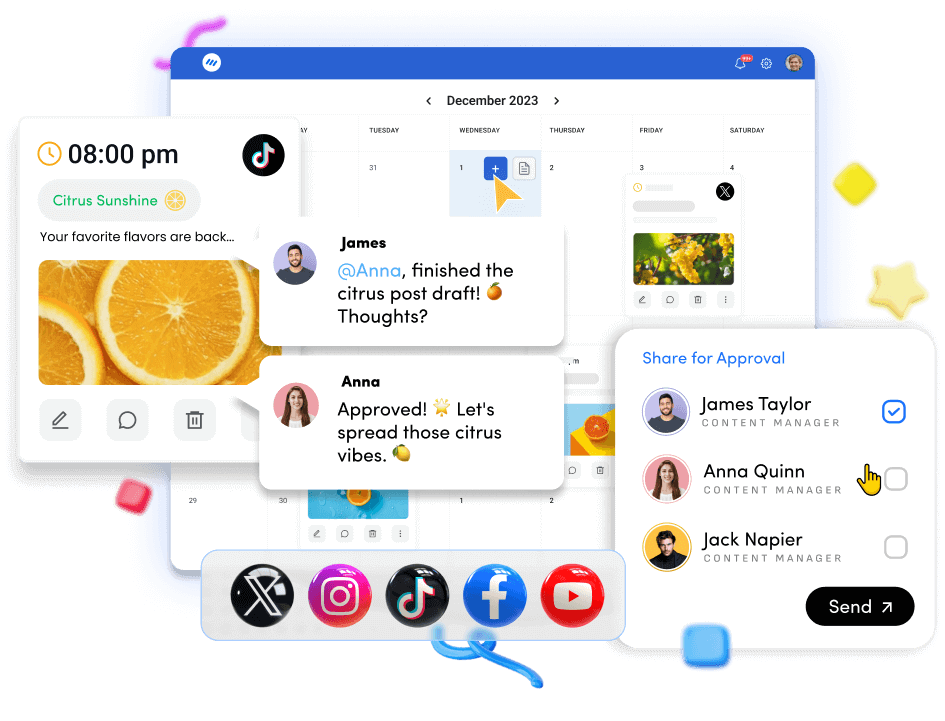
Why cross-team collaboration is important
Cross-team collaboration is crucial for modern businesses aiming to stay competitive in an evolving marketplace. When different departments join forces, they unlock new possibilities that go beyond what individual teams can achieve alone.
Here’s why cross-team collaboration matters:
Enhanced problem-solving
When people from diverse teams collaborate, they bring unique perspectives to the table. This diversity leads to more comprehensive solutions to complex challenges. For instance, when product development teams collaborate with customer service, they can identify pain points directly from user feedback, creating more effective solutions.
Boosted productivity
Collaboration streamlines workflows and minimizes redundancies. Teams using collaborative tools are 30% more productive than those working in silos. By sharing resources and knowledge, employees avoid duplicating efforts and can focus on tasks that drive projects forward.
Accelerated innovation
Cross-team collaboration sparks creativity by combining ideas from different disciplines. About 57% of organizations believe digital transformation significantly impacts workplace innovation more than physical or cultural elements. This blend of perspectives often leads to breakthrough products and strategies.
Improved employee satisfaction
Working across teams creates a sense of belonging and shared purpose. When employees see how their contributions connect to broader goals, job satisfaction increases. This collaborative environment reduces workplace conflicts and fosters a supportive atmosphere, boosting morale and retention.
Greater adaptability
Organizations that promote cross-team collaboration are more agile and responsive to market shifts. By uniting different skill sets, they can quickly adapt to new challenges or opportunities, ensuring a more synchronized approach to business problems.
15 hacks to level up cross team collaboration
Improving cross-team collaboration is essential for driving innovation and achieving shared goals within an organization. To make the most of the diverse skills and perspectives that each team brings, you need effective strategies that promote communication and cooperation.
These hacks can help bridge gaps, streamline processes, and foster a culture of teamwork across departments. By implementing these strategies, you can create an environment where collaboration thrives, ultimately leading to enhanced productivity and job satisfaction.
Here are 15 hacks to level up cross-team collaboration in your organization.
1. Centralize communications
Centralizing communications is essential for fostering effective cross-team collaboration. By using a single platform, such as Slack or Microsoft Teams, you can avoid siloed information that often hinders collaboration. This unified approach ensures that all team members have access to the same information and updates, minimizing confusion and miscommunication.
With everyone on the same page, teams can respond more swiftly to changes and challenges, leading to improved efficiency and productivity. Centralized communication also promotes transparency and strengthens relationships across departments.
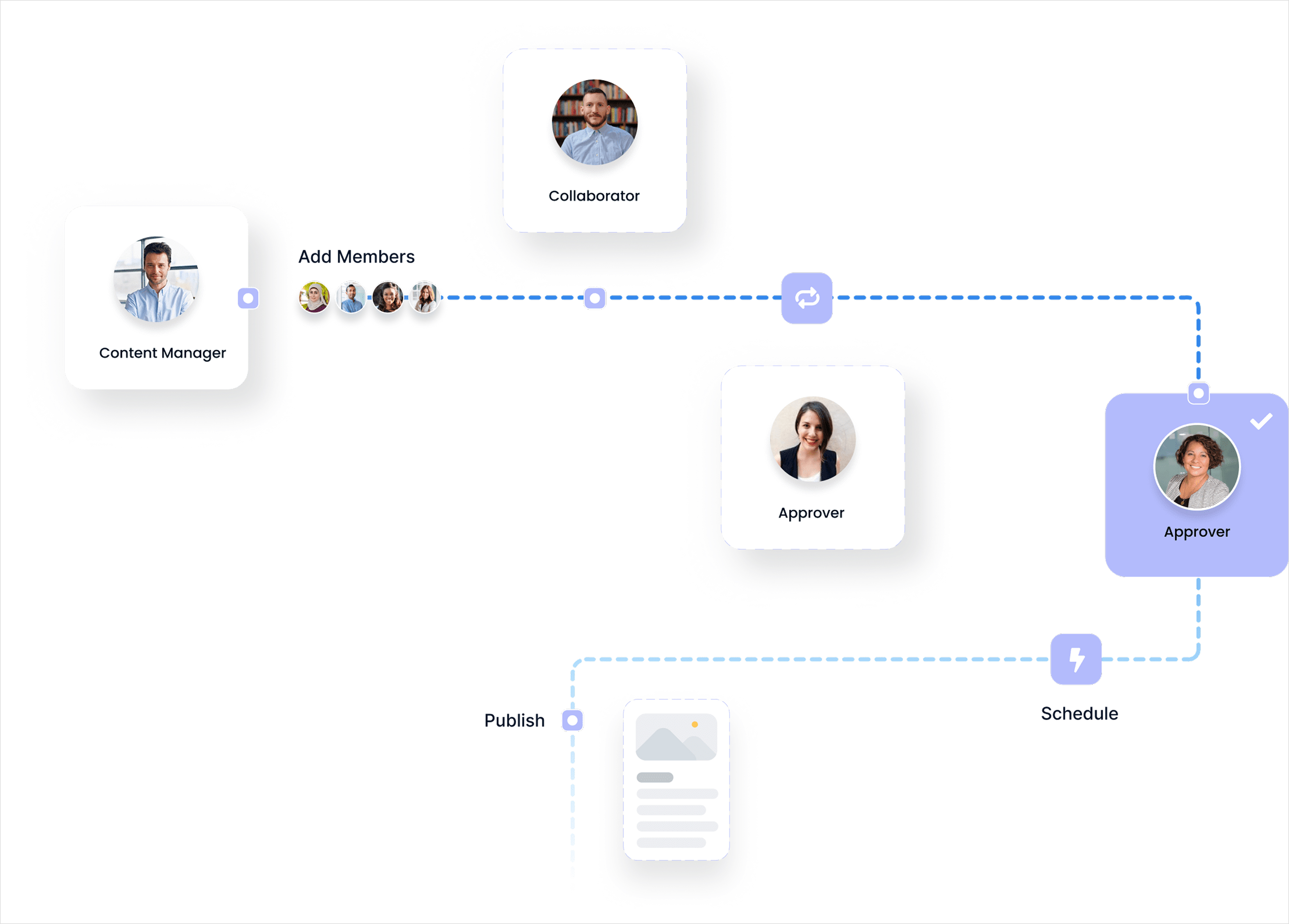
2. Problem-solving
To enhance cross-team collaboration, implement structured techniques like brainstorming sessions and round-table discussions. These approaches encourage team members from different departments to share their perspectives and insights, leading to innovative solutions. During brainstorming sessions, set aside judgment to foster a free flow of ideas.
Round-table discussions can facilitate open dialogue about challenges and foster a collective problem-solving mindset. This collaborative environment not only addresses issues effectively but also strengthens relationships among team members, creating a more cohesive workplace.

3. Do brainstorming sessions together
Joint brainstorming sessions are a powerful way to harness the collective creativity of diverse teams. By bringing together individuals from different departments, you can generate innovative solutions that might not emerge in isolation.
Use techniques like mind mapping or round-robin sharing to ensure everyone has a voice. These sessions not only foster creativity but also build camaraderie among team members, enhancing relationships and paving the way for successful collaboration.
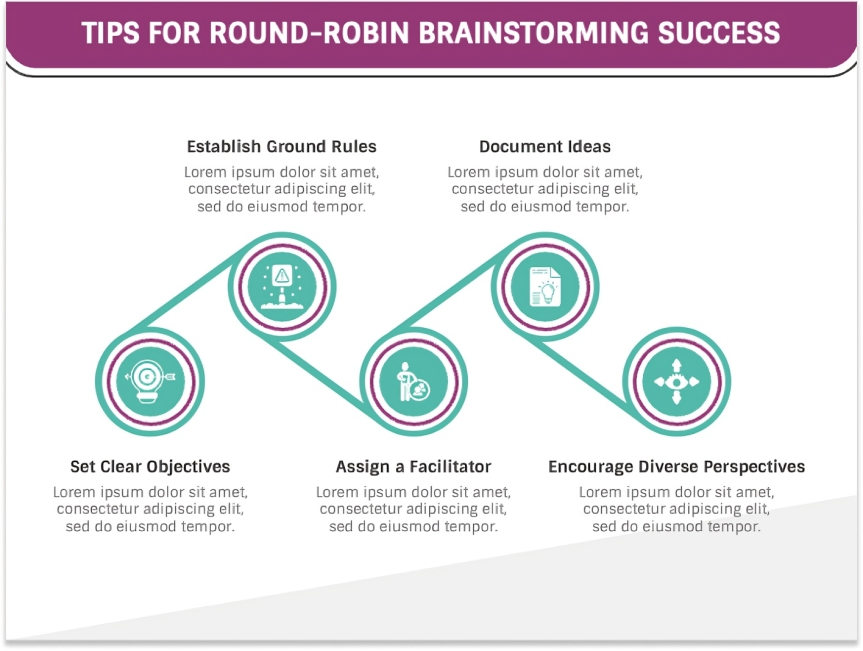
4. Improve tacit knowledge capture
Improving tacit knowledge capture is vital for leveraging the expertise within your organization. Encourage team members to share their experiences and insights through informal meetings, lunch-and-learns, or documentation. This knowledge-sharing culture can help bridge gaps between departments and prevent the loss of valuable information.
By creating platforms where employees can contribute their knowledge, organizations foster a collaborative environment that promotes continuous learning. This not only enhances problem-solving capabilities but also strengthens the overall team dynamic, leading to more innovative outcomes.

5. Facilitate innovation via knowledge sharing
Facilitating innovation through knowledge sharing is crucial for any organization looking to stay competitive. By promoting a culture where team members freely exchange ideas, insights, and experiences, organizations can unlock new perspectives that lead to creative solutions.
Encourage informal knowledge-sharing sessions, such as lunch-and-learns or cross-team workshops, where employees can showcase their expertise. Implementing collaborative tools, such as wikis or shared drives, can also facilitate easy access to valuable information.
6. Drive toward alignment
Driving toward alignment among all teams is essential for achieving organizational goals. Ensuring that every department understands the overarching objectives, strategies, and processes fosters a cohesive work environment. Regular alignment meetings can help teams sync up on priorities, clarify roles, and address potential roadblocks.
Visual tools like dashboards or project management software can provide real-time insights into progress and goals. By maintaining alignment, organizations can streamline efforts, reduce miscommunication, and enhance overall productivity, leading to more effective collaboration and successful outcomes.
7. Implement a continuous feedback loop
Implementing a continuous feedback loop is essential for enhancing cross-team collaboration. Regularly gathering feedback allows teams to identify challenges, address issues promptly, and improve processes. Use tools like surveys, suggestion boxes, or regular check-ins to solicit input from team members.
This ongoing dialogue encourages openness and trust, making employees feel valued and heard. By analyzing feedback trends, organizations can make data-driven decisions to refine workflows, enhance communication, and foster a collaborative environment that drives success and innovation.

8. Strengthen leadership capabilities
Strengthening leadership capabilities is crucial for effective cross-team collaboration. Assigning dedicated leaders or champions to oversee collaboration efforts can provide direction and support. These leaders should facilitate open communication, ensure alignment on goals, and encourage a culture of collaboration.
They can also mediate conflicts and promote a sense of unity among diverse teams. By investing in leadership development and training, organizations empower leaders to motivate their teams, foster relationships, and drive collaborative initiatives that enhance overall performance and outcomes.,

9. Create a sense of shared responsibility
Creating a sense of shared responsibility among team members is vital for fostering collaboration and accountability. When individuals understand that their contributions directly impact the project’s success, they become more engaged and committed to their work.
Encourage this mindset by setting collective goals and celebrating team achievements. Implementing regular team check-ins can help reinforce this culture, allowing members to discuss challenges and support one another.

10. Utilize visual project management
Utilizing visual project management tools, like Kanban boards, can significantly enhance team collaboration and transparency. These visual aids allow teams to track progress at a glance, making it easy to identify what tasks are in progress, completed, or pending.
By having a clear visual representation of workflows, team members can better understand priorities and deadlines. This transparency fosters accountability and encourages open communication, as everyone can see how their contributions fit into the larger picture.

11. Leverage diverse skill sets
Encouraging teams to leverage diverse skill sets is essential for innovative problem-solving. Each team member brings unique talents and perspectives, which can contribute to more comprehensive solutions. Creating an environment where individuals feel comfortable sharing their expertise promotes collaboration and creativity.
For example, during brainstorming sessions, actively involve members from various departments to gather a wider range of ideas. By recognizing and utilizing each person’s strengths, teams can tackle challenges more effectively and innovate in ways they may not have considered alone.

12. Solicit feedback
Regularly soliciting feedback from team members is crucial for improving collaboration processes. Creating an open environment where team members feel comfortable sharing their thoughts can lead to valuable insights. Use structured methods like surveys or informal check-ins to gather opinions on current workflows, tools, and communication practices.
Analyzing this feedback helps identify areas for improvement and empowers employees to contribute to their teams actively. When team members see that their input leads to actionable changes, it enhances engagement and strengthens the collaborative culture within the organization.

13. Facilitate conflict resolution
Establishing clear guidelines for conflict resolution is vital for maintaining a collaborative environment. Conflicts are natural in any team setting, but how they are handled can make a significant difference in team dynamics. Create a framework that encourages open communication and constructive discussions when disagreements arise.
Training team members in conflict resolution techniques can empower them to address issues proactively. By fostering a culture of respect and understanding, teams can resolve conflicts effectively, allowing them to refocus on collaboration and achieve their collective goals.
14. Lead by example
Leadership plays a critical role in fostering a collaborative culture within teams. When leaders model collaborative behavior, it sets a standard for others to follow. This includes actively engaging in teamwork, encouraging open communication, and demonstrating trust and respect among team members.
Leaders should also share successes and failures transparently, showing that collaboration is key to growth. By leading by example, leadership not only strengthens team dynamics but also cultivates an environment where collaboration thrives, ultimately driving better results for the organization.
15. Celebrate wins
Celebrating wins, both big and small, is an essential practice for enhancing cross-team collaboration. Recognizing and acknowledging achievements fosters a sense of unity and motivates team members to continue working together effectively.
Whether it’s completing a project ahead of schedule, reaching a significant milestone, or successfully overcoming a challenge, take the time to celebrate these moments.
This can be done through team meetings, shout-outs in company newsletters, or informal gatherings. Celebrating wins not only boosts morale but also reinforces the importance of teamwork, making everyone feel valued and appreciated for their contributions.

Top 5 tools to ease team collaboration
In today’s fast-paced work environment, effective collaboration is key to success. Utilizing the right tools can enhance communication, streamline processes, and improve overall team productivity.
Here are the best 5 tools to help your team collaborate more efficiently and achieve shared goals.
1. ContentStudio
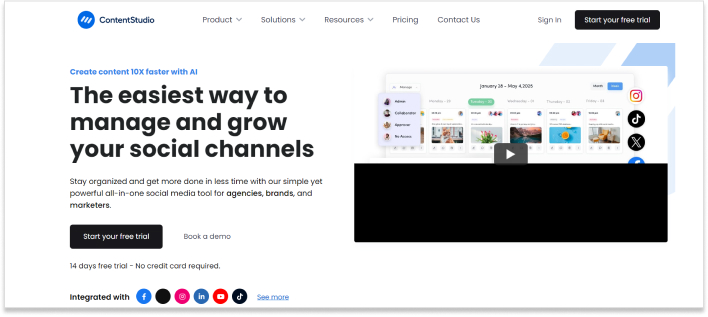
ContentStudio is an all-in-one social media management platform designed to streamline content creation, planning, and collaboration for teams. Its intuitive dashboard allows users to manage multiple projects at once, facilitating collaboration among team members. Users can discover trending topics relevant to their audience, allowing them to create timely and engaging content.
Additionally, the platform supports post-scheduling across various social media channels, ensuring a consistent online presence. With powerful analytics tools, teams can monitor the performance of their content, making it easy to adapt strategies based on insights.
Key features:
- Content collaboration: ContentStudio allows team members to collaborate on projects in real-time, ensuring that everyone stays aligned on goals and deadlines. Users can comment on drafts and provide feedback, streamlining the review process.
- Task assignment: Teams can assign specific tasks to members, making it clear who is responsible for what. This feature enhances accountability and helps prevent tasks from falling through the cracks.
- Content calendar: The platform offers a shared content calendar, enabling teams to visualize upcoming posts and campaigns. This promotes coordination and helps avoid scheduling conflicts.
- Approval workflows: ContentStudio includes customizable approval workflows, allowing teams to define the review process for their content. This ensures that all material is vetted before publication, maintaining quality and consistency.
- Integration with other tools: ContentStudio seamlessly integrates with various tools, allowing teams to pull in resources from other platforms. This enhances collaboration by creating a centralized hub for all content-related activities.
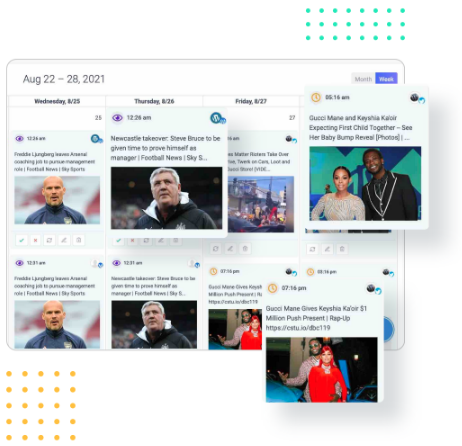
Social Media Calendar for Digital Agencies
Organize all your social posts and visualize your client’s social media content plan with an interactive Content Calendar
14 days free trial - no credit card required2. Google Docs

Google Docs is a cloud-based document collaboration tool that allows users to create, edit, and share documents in real time. Developed by Google, it enables multiple users to work on the same document simultaneously, making it perfect for team collaboration.
Users can leave comments, suggest edits, and access the version history to track changes. Google Docs is free with a Google account, making it a popular choice for startups and remote teams needing an accessible and efficient way to collaborate on documents from anywhere.
Key features:
- Real-time collaboration
- Commenting and suggestion mode
- Automatic saving of changes
- Version history tracking
- Sharing with customizable permissions
- Integration with Google Workspace
- Offline editing capabilities
3. Asana

Asana is a versatile project management tool designed to help teams organize, track, and manage their work effectively. By offering a user-friendly interface, Asana simplifies the process of assigning tasks, setting deadlines, and tracking progress across various projects.
Teams can collaborate in real time, share updates, and keep all project-related information in one place. Asana is particularly beneficial for organizations aiming to reduce complexity and enhance productivity through improved communication and collaboration among team members.
Key features:
- Task assignment and tracking
- Customizable project templates
- Timeline and calendar views
- Integration with other tools
- Comments and attachments on tasks
- Reporting and analytics
- Mobile accessibility
4. Trello

Trello is a flexible project management tool that utilizes boards, lists, and cards to help teams organize tasks visually. This highly customizable platform allows users to create workflows tailored to their specific needs, making it easy to track project progress and manage tasks collaboratively.
Trello’s simplicity and intuitive design make it accessible for teams of all sizes, while its extensive integration options enable users to connect with other tools for enhanced productivity.
Key features:
- Visual task management
- Customizable boards and lists
- Drag-and-drop functionality
- Team collaboration features
- Due dates and checklists
- Power-ups for added functionality
- Integration with various apps
5. Basecamp

Basecamp is a comprehensive project management tool that consolidates essential features such as message boards, scheduling, to-do lists, group chat, and file storage into a single platform. This collaboration software enhances teamwork and efficiency by keeping all necessary tools in one place, ensuring that tasks do not fall through the cracks and reducing confusion among team members.
Basecamp’s user-friendly design makes it accessible for teams of various sizes, making it an excellent choice for small to medium-sized businesses (SMBs) that need a straightforward and effective project management solution.
Key features:
- Centralized communication and project management
- Task assignment and progress tracking
- File sharing and storage
- Group chat functionality
- Scheduling and calendar integration
- User-friendly interface for easy navigation
Conclusion
Enhancing cross-team collaboration is essential for driving innovation and achieving business goals in 2025. By implementing the 15 hacks discussed, organizations can create a culture of collaboration that leverages diverse skill sets and encourages open communication.
Tools like ContentStudio play a vital role in this transformation, offering features that streamline project management and facilitate knowledge sharing. As teams become more interconnected, they can tackle challenges more effectively and boost overall productivity.
Embracing these strategies will not only improve collaboration but also foster a more engaged and motivated workforce, ready to meet the demands of the future.
Plan, schedule, share, and analyze content for 15+ social media channels.
Try ContentStudio for FREE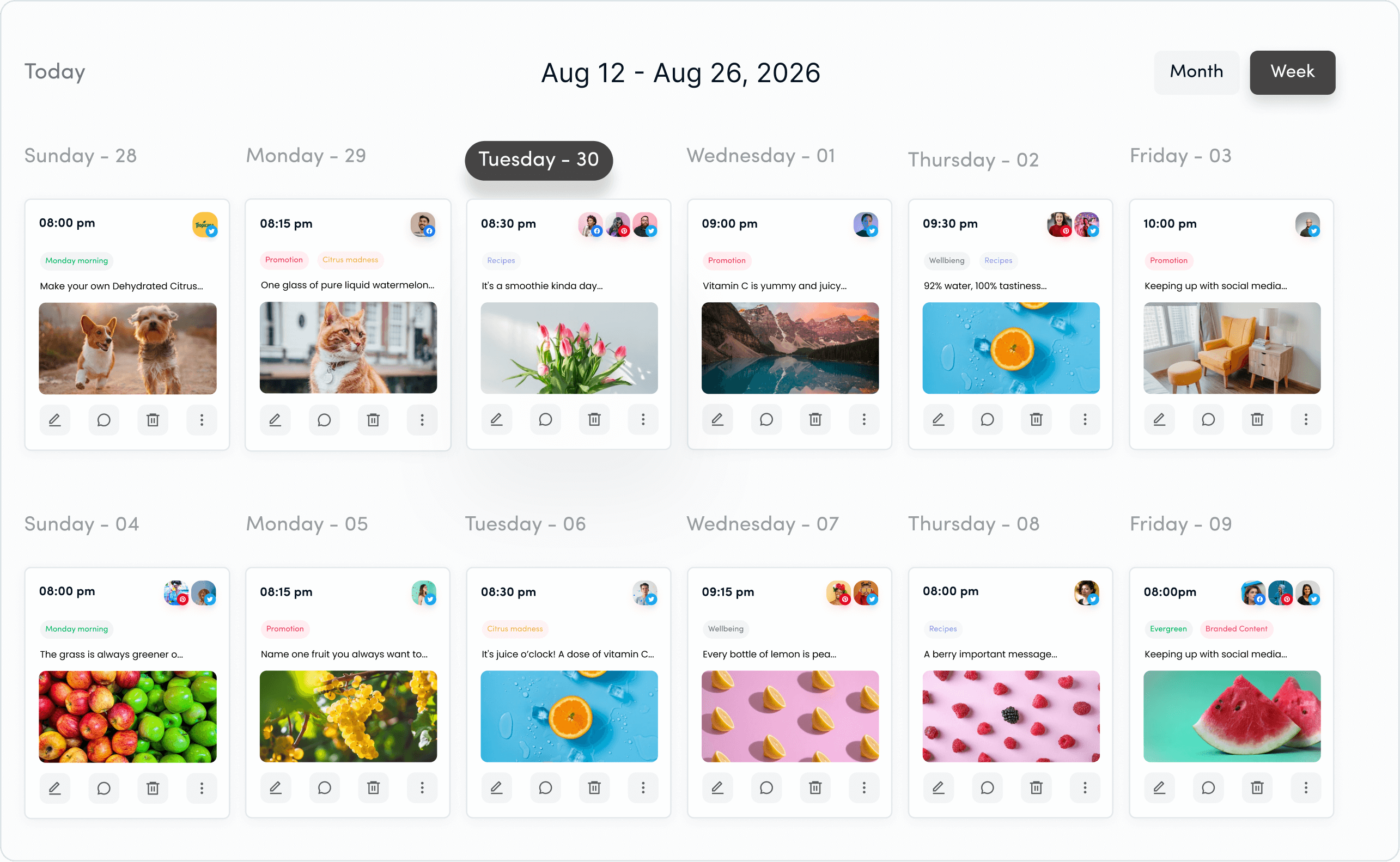
FAQs
How to improve collaboration among cross-departments?
Improving collaboration among cross-departments can be achieved by establishing clear goals, enhancing communication, and fostering a culture of trust. Regular meetings, collaborative tools, and team-building activities also play a crucial role in breaking down silos and encouraging open dialogue.
What are the seven C’s of successful team collaboration?
The seven C’s of successful team collaboration include clarity, communication, collaboration, coordination, cooperation, commitment, and creativity. These principles guide teams to work together effectively by ensuring everyone is on the same page and actively engaged in the process.
How do you collaborate across teams?
To collaborate across teams, it’s essential to establish shared goals and open communication channels. Utilizing collaborative tools, scheduling regular check-ins, and encouraging knowledge sharing can help teams stay aligned and foster a sense of unity.
How can we measure the success of cross-team collaboration efforts?
Success in cross-team collaboration can be measured through key performance indicators (KPIs) such as project completion rates, feedback quality, and team satisfaction scores. Regular assessments and surveys can provide insights into collaboration effectiveness.
Recommended for you
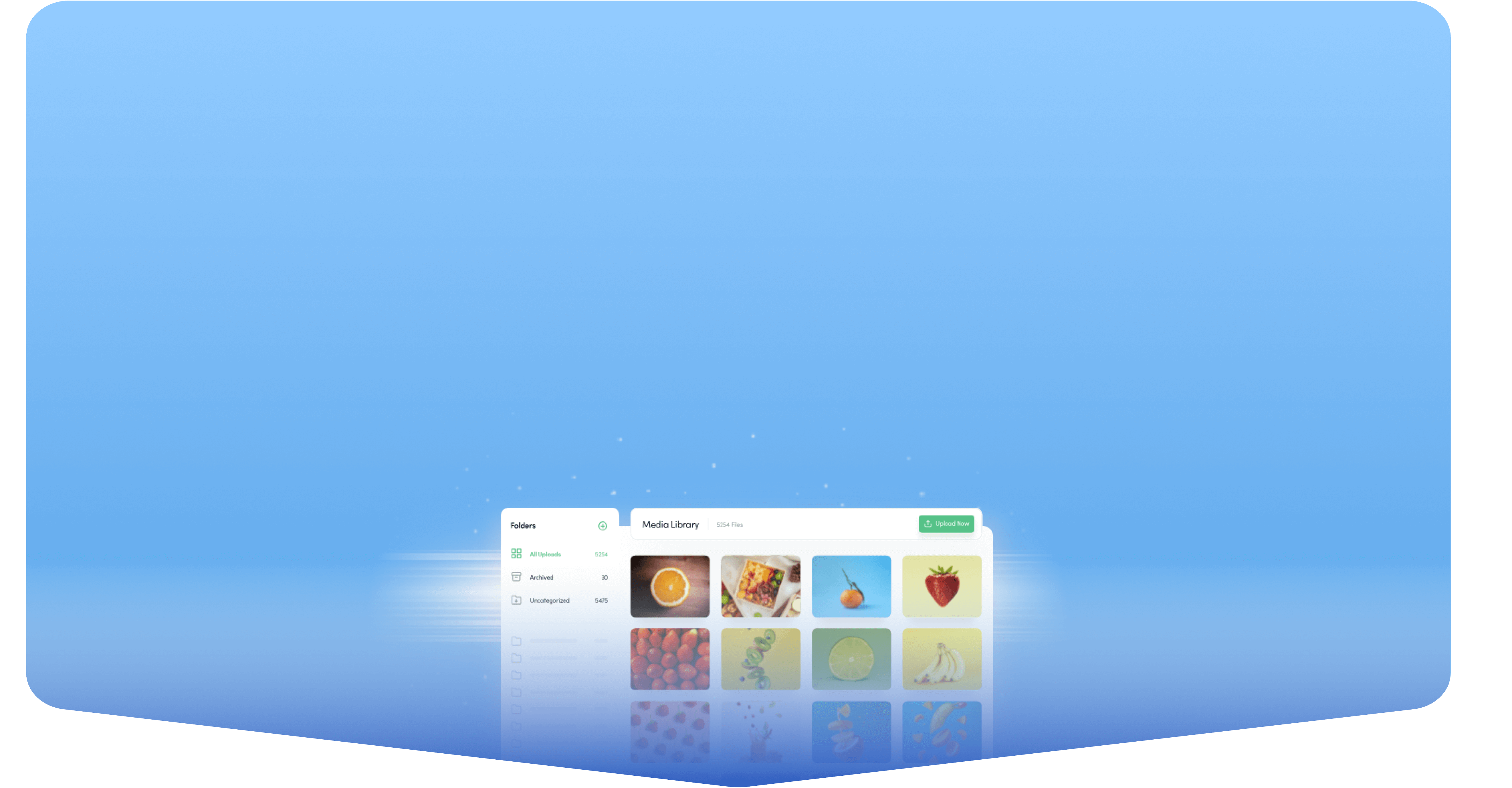

Powerful social media management software
14-day free trial - No credit card required.



